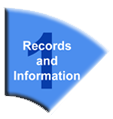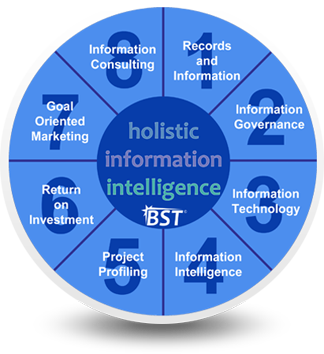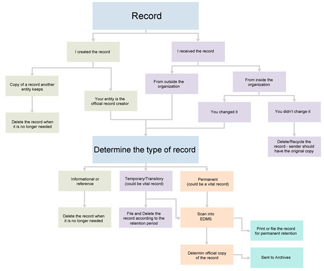
Records Management (RM), also known as Records
and Information Management (RIM), is the practice of controlling and
governing what is considered to be the most important information of an
organization throughout its life-cycle. This includes from the time the
information is conceived through to its eventual disposition. This work
includes identifying, classifying, prioritizing, storing, securing,
archiving, preserving, retrieving, tracking and destroying the
information if it is no longer needed.
RIM should be a part of an organization's broader activities and is associated with Information Governance. It is primarily concerned with the evidence of an organization's activities as well as the reduction or mitigation of risk that may be associated with such evidence.
A record is defined as being something
that represents proof of existence and that can be used to recreate
or prove state of existence, regardless of medium or
characteristics. Records and information are either created or
received by an organization in pursuance of or compliance with legal
obligations, or in the transaction of business. Records and
information can be either tangible objects, such as paper documents
like birth certificates, driver's licenses, and physical medical
x-rays, or digital information, such as electronic office documents,
data in application databases, web site content, and electronic mail
(e-mail).
Click to enlarge


